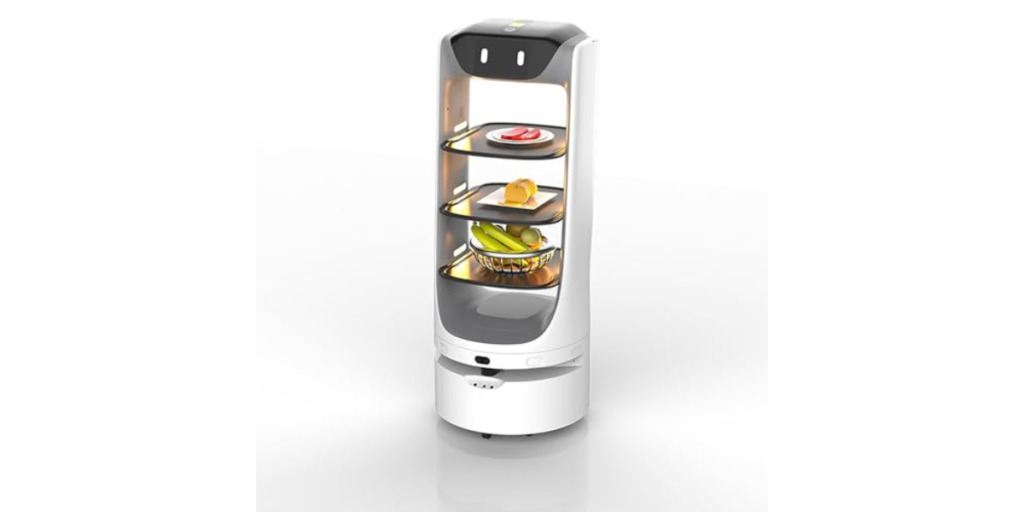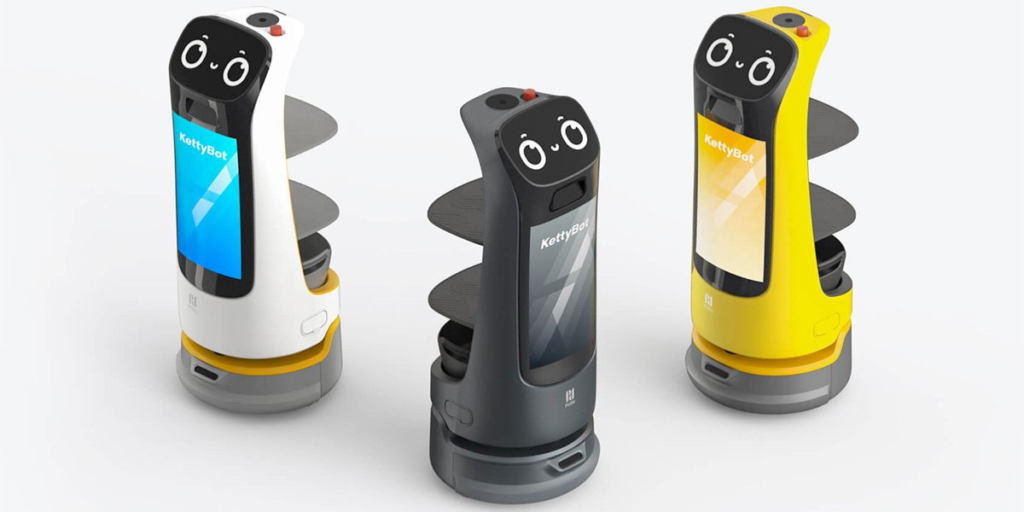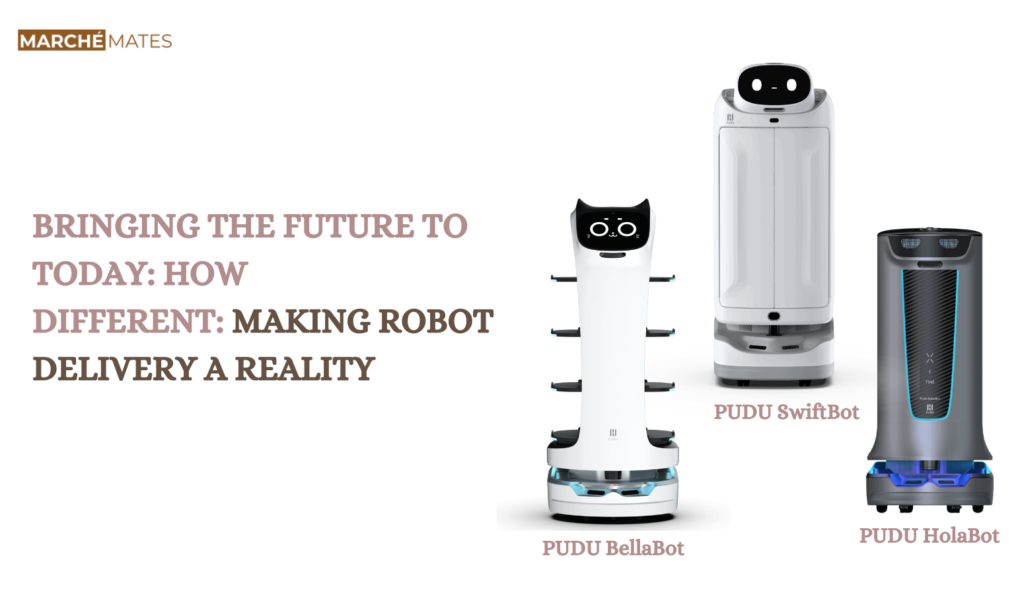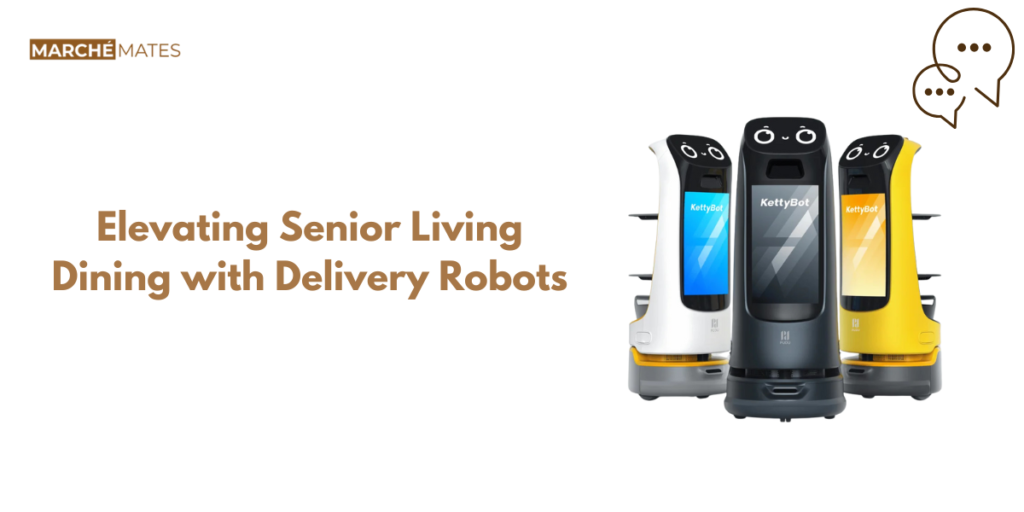In today’s world, technology is evolving faster than ever, reshaping nearly every aspect of our daily lives. In the world of senior care, one of the most exciting technological breakthroughs is the introduction of Smart Delivery Robot in Saskatchewan. These innovative machines are revolutionising the way senior living communities manage dining services, making life easier for both residents and staff. From reducing physical strain to improving social interaction, delivery robots are becoming an essential part of the senior care experience.
But how exactly are smart delivery robots transforming the senior dining experience? Let’s dive into the real-time challenges and solutions that these robots bring to the table (pun intended!).
Real-Time Challenges in Senior Living Dining

1. Personalised Dining Needs
Seniors today have unique dietary needs that go beyond the standard offerings of traditional dining services. Whether it’s a low-sodium diet for those with heart conditions, high-protein options for residents with muscle loss, or gluten-free meals for those with sensitivities, the traditional senior dining setup often doesn’t cater to these diverse needs.
The rigid meal schedules and fixed menus don’t always align with the personal preferences of residents, leaving many unsatisfied with their food choices. The result? Missed nutritional goals, dissatisfaction, and sometimes even health issues.
2. Mobility Limitations
Seniors with mobility challenges face difficulties navigating large spaces and dining areas. For those using walkers, wheelchairs, or other assistive devices, the trek to the communal dining hall can be exhausting and dangerous. Falls and accidents are common, particularly for those with limited mobility, and a simple task like having a meal can become an overwhelming challenge.
3. Isolation in the Dining Experience
For many seniors, meal times in senior living communities can be solitary affairs. While communal dining is intended to foster social connections, some residents may not feel comfortable attending, whether due to physical limitations or a preference for quiet meals. This can lead to isolation, a growing concern in senior care, affecting mental health and overall well-being.
4. Staffing Shortages and Strain
The senior care industry faces chronic staffing shortages, and staff members often juggle multiple responsibilities. From personal care to health monitoring, meals are just one part of the equation. When staff are overwhelmed, meal delivery can suffer, resulting in delays or mistakes and ultimately affecting the overall resident experience.
How Smart Delivery Robots Are Transforming Senior Living Dining

1. Improved Meal Delivery with Smart Technology
The introduction of smart delivery robots is helping senior living communities streamline their dining services and improve overall efficiency. These robots, such as the automatic robots for restaurants or those designed specifically for senior care, can transport meals directly to residents’ rooms with precision and speed.
These robots can navigate hallways, avoid obstacles, and even take elevators, making meal delivery more efficient and timely. No longer will a resident need to wait for staff to deliver their meal; the robot does it automatically.
2. Personalised meal deliveries
Each senior resident has unique dietary preferences and health needs. With a smart delivery robot, personalisation becomes easier than ever. These robots can be programmed to deliver specific meals at specific times, ensuring residents get exactly what they need when they need it. Whether it’s a diabetic-friendly meal, a low-sodium option, or even a custom order, these robots provide a level of flexibility that traditional meal services can’t match.
3. Breaking Barriers of Mobility
Residents with limited mobility, getting to the dining room can be a struggle. Smart delivery robots eliminate this problem by bringing food directly to their rooms. This technology is particularly beneficial for seniors who may have trouble walking long distances or navigating crowded spaces.
4. Combatting Isolation and Fostering Interaction
While robots might seem like they would add to isolation, they actually encourage more social interaction. These delivery robots can be designed to greet residents, ask for feedback, and even share friendly messages, making the delivery process more engaging.
For residents who may not interact with others in communal dining areas, the robots can become a source of connection. Staff members can also monitor the robots’ deliveries, providing a chance to check on residents, share a few words, and maintain meaningful relationships.
5. Improved Efficiency and Reduced Staff Burden
Another major advantage of using robots for meal delivery is the efficiency they bring to the table. Cleaning robots are also becoming popular in businesses, and in senior care settings, they provide an additional layer of support by maintaining clean dining areas. Meanwhile, meal delivery robots help staff focus on other essential tasks, such as health monitoring or direct care, without getting bogged down by the time-consuming task of bringing meals to rooms.
By automating routine deliveries, these robots free up staff to focus on more meaningful, personal interactions with residents, improving overall care quality. The robots work 24/7, ensuring meals are delivered on time while allowing staff to address other critical needs.
6. Better Health Monitoring and Support
A smart delivery robot can also be integrated with senior care systems to track eating habits, ensuring that residents receive the correct portion sizes and nutritional content. With automated delivery, carers can monitor whether a resident consistently finishes their meals or if they need additional support, such as dietary adjustments or supplements.
The Future of Robotics in Senior Living
The rise of automatic robots for restaurants and delivery robots is just the beginning. As technology continues to evolve, we can expect even more sophisticated robots that take on more tasks, such as delivering medications, assisting with mobility, or providing companionship.
These robots could be integrated with other smart technologies, such as sensors and health monitoring systems, to provide a comprehensive care solution that addresses everything from meal delivery to personal safety. With advancements in AI, robots will become even more intuitive, offering a level of personalisation and interaction that wasn’t previously possible.
Overcoming Challenges in Senior Care with Robotics
While the potential benefits are immense, there are still some challenges to consider. Smart delivery robots in Saskatchewan or any other region require an initial investment, which might be a concern for smaller senior living communities. However, as technology advances and becomes more affordable, the cost of these systems will likely decrease, making them accessible to a broader range of facilities.
Another consideration is reliability. Delivery robots must navigate complex environments through hallways, around obstacles, and up and down elevators without fail. Fortunately, continuous advancements in AI, machine learning, and robotics ensure that these robots are becoming more efficient and adaptable every day.
Conclusion: A New Era of Senior Living
The introduction of delivery robots in senior living communities is a groundbreaking innovation that brings significant benefits to residents and staff alike. These robots are solving real-time problems faced by seniors, such as mobility challenges, personalised dining needs, and social isolation, while also alleviating some of the pressures faced by staff members.
But it doesn’t end with meal delivery. As technology continues to advance, smart delivery robots will play an even larger role in senior living, providing enhanced care, better monitoring, and a more fulfilling lifestyle for residents.
At Walking Stick Mobility, we understand the importance of making daily life easier and more enjoyable for seniors. From mobility aids to service robots, we offer a wide range of products designed to enhance mobility, promote independence, and improve overall health and well-being.
Take control of your health and independence today by visiting our store. Let us help you find the right products to elevate your lifestyle and make everyday tasks easier. Visit us online or contact us for personalised advice and recommendations!
FAQs About Delivery Robots: How They Can Revolutionise Your Space
Ques 1: Are cleaning robots a worthwhile investment for your home?
Ans: Yes, cleaning robots can be a great investment for your home, especially if you’re looking to save time and effort on daily cleaning tasks. These robots can automate floor cleaning, removing dust, debris, and pet hair with minimal intervention. They are especially useful for busy households, seniors, or anyone who prefers a hands-off approach to keeping their home clean.
Ques 2: What’s the Best Smart Delivery Robot for Office Spaces?
Ans: The best smart delivery robots for office spaces are those that offer a combination of reliability, efficiency, and the ability to integrate into existing systems. Top models are designed to handle deliveries such as documents, parcels, or snacks within office environments. Look for robots that offer easy integration with office management software, allowing them to navigate corridors and elevators autonomously.
Ques 3: How Are Delivery Robots Used in Senior Care Solutions?
Ans: Delivery robots play a vital role in enhancing senior care solutions by automating the delivery of meals, medications, and other essential supplies directly to residents’ rooms. They provide seniors with increased independence, particularly those with limited mobility, by eliminating the need to travel to communal dining areas or wait for staff to deliver meals. Robots can be programmed to deliver tailored, time-sensitive meals, ensuring proper nutrition is maintained.
Ques 4: How Can Smart Delivery Robots Improve Efficiency and Reduce Staff Burden?
Ans: Smart delivery robots significantly improve operational efficiency and reduce staff burden by automating routine tasks, particularly meal and supply deliveries. In environments like senior care facilities or office spaces, these robots can transport food, documents, and even medications without requiring constant human oversight. By handling repetitive delivery tasks, robots free up staff to focus on more complex or personal duties, such as providing direct care to residents or handling client enquiries.


